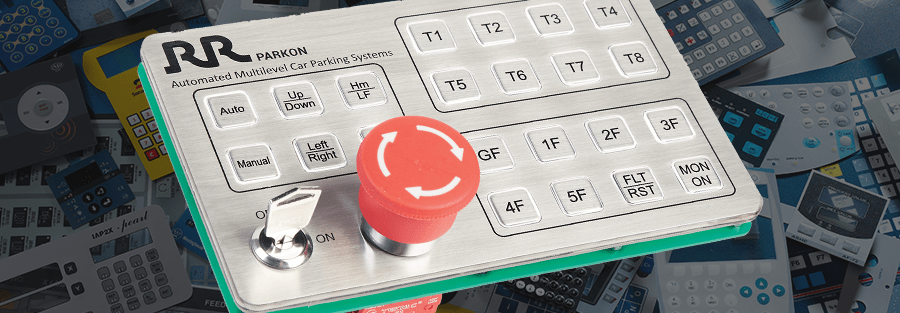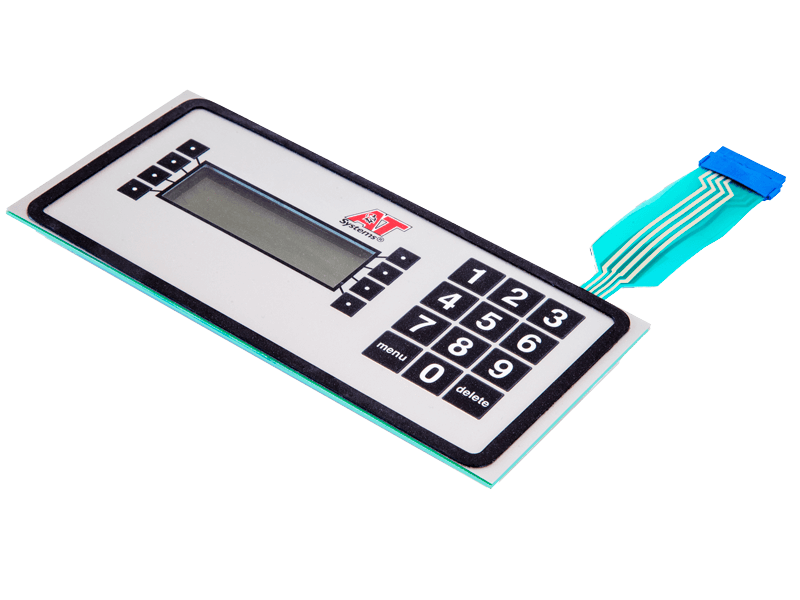Why Membrane Switches Are a Trustworthy Choice for Interface Solutions
Discover the Future of Control Interfaces: Why Membrane Switches Over Are Getting Popularity
As markets significantly prioritize effective and straightforward control user interfaces, membrane switches are arising as an engaging solution that integrates performance with layout flexibility. With the increase of wise modern technology and sustainability concerns, the abilities and advancements surrounding membrane changes warrant more detailed exam.
Understanding Membrane Buttons
Membrane layer buttons are integral components in contemporary digital tools, acting as user interfaces between individuals and makers. These buttons include numerous layers, generally including a graphic overlay, a spacer layer, and a circuit layer. When a user presses a button on the overlay, the top layer reaches the circuit layer, completing a circuit and sending a signal to the device. This simple yet effective mechanism permits smooth communication with modern technology.

Durability is an additional essential attribute, as membrane buttons can be created to resist ecological factors such as wetness, dust, and chemicals. This durability makes them perfect for applications in rough problems. In general, understanding the framework and feature of membrane buttons is essential for valuing their function in the evolution of individual interfaces in today's technology-driven world.
Secret Benefits of Membrane Buttons
Providing a variety of advantages, membrane layer buttons have actually ended up being a recommended option in various applications (Membrane Switches). Among the primary benefits is their compact design, making it possible for producers to optimize space in tools without endangering capability. Membrane buttons are light-weight, which is especially useful in portable electronic tools

Furthermore, these buttons give excellent resilience. Constructed from versatile materials, they are resistant to dust, wetness, and a range of ecological aspects, making them ideal for rough problems. This longevity often translates into a longer life-span contrasted to typical mechanical buttons.
In addition, membrane layer switches over permit smooth combination of signs and graphics, using aesthetic versatility and improving customer experience. Personalization alternatives are substantial, making it possible for brands to produce unique user interfaces that straighten with their product identity.
Another trick benefit is their simplicity of cleaning and upkeep. The level surface of membrane layer switches over stops the accumulation of dust and gunk, making them suitable for hygienic environments. Last but not least, membrane buttons are cost-efficient, as they can be created in high volumes at reduced expenses, making them accessible for a wide variety of industries. These elements jointly contribute to their increasing appeal in contemporary control user interfaces.
Applications Throughout Industries

A myriad of sectors are progressively taking on membrane buttons due to their adaptability and functionality. These manage user interfaces are particularly common in the auto industry, where they are next page made use of in control panels and infotainment systems, supplying a straightforward and streamlined interface. In the medical area, membrane layer switches help with the procedure of analysis tools and client tracking systems, making certain reliability and simplicity of usage in crucial circumstances.
In addition, the customer electronic devices industry benefits from membrane layer buttons in devices such as microwaves and remote controls, enabling structured layout and boosted sturdiness. Membrane Switches. The aerospace field additionally makes use of membrane layer switches in cabin controls, where space constraints require efficient and compact design services
Furthermore, the industrial industry utilizes membrane layer buttons in equipment control board, using durability against severe atmospheres and guaranteeing operational efficiency. Retail environments have actually welcomed membrane layer buttons in point-of-sale systems, improving user interaction while keeping visual charm.
Design Trends in Membrane Layer Buttons
Developing alongside technical innovations, style trends in membrane buttons are progressively concentrated on boosting customer experience and aesthetic appeal. Modern membrane buttons are being created for simplicity and instinctive usage, allowing customers to browse interfaces easily. This shift in the direction of user-centric style emphasizes responsive comments, ensuring that individuals receive prompt confirmation of their activities.
Furthermore, customizable graphics and shades are becoming standard attributes in membrane button designs. This adaptability enables suppliers to produce personalized user interfaces that straighten with branding and certain user requirements. The unification of backlighting is one more noticeable pattern, as it not just enhances exposure in low-light conditions yet also adds an aesthetically striking element to the general layout.
Moreover, the fad towards slim and light-weight products is gaining traction, permitting sleeker designs that can effortlessly integrate into different applications. This change not only enhances visual appeals however additionally adds to the overall performance and durability of the switches. Finally, green materials are progressively being made use of, reflecting a broader motion in the direction of sustainability in item layout. These style patterns jointly emphasize the expanding importance of combining form and function in the advancement of membrane buttons, eventually enhancing the individual experience.
Future Expectation for Control Interfaces
The future of control user interfaces is poised for significant change as emerging modern technologies remain to improve individual interactions across numerous tools. The blog here combination of advanced products, such as adaptable electronics and conductive inks, will certainly improve the versatility and capability of membrane layer switches, making them significantly versatile to a series of applications. In addition, the surge of the Web of Points (IoT) will certainly drive demand for even more user-friendly, user-friendly user interfaces that can perfectly incorporate with wise devices.
As fabricated intelligence and artificial intelligence develop, regulate interfaces will likely include more personalized functions, allowing individuals to interact with gadgets in manner ins which are customized to their preferences and routines (Membrane Switches). This change towards user-centric layout will place membrane layer switches as a crucial player in the market, especially in industries like healthcare, automobile, and consumer electronics
Additionally, the press for sustainability will certainly encourage producers to check out green materials and production methods, making sure that the future of control user interfaces straightens with ecological factors to consider. Overall, as technology continues to advancement, membrane layer buttons will certainly end up being significantly innovative, leading the means for innovative control solutions that enhance user experience and operational efficiency across varied sectors.
Verdict
In final thought, the increasing fostering of membrane switches highlights their relevance in the development of control user interfaces. As easy to use interfaces come to be necessary in the context of IoT and AI developments, membrane layer switches are placed to play a vital role.
As sectors increasingly focus on efficient and straightforward control interfaces, membrane layer switches read this are arising as a compelling option that combines performance with design versatility.Durability is one more key function, as membrane layer switches can be created to resist environmental variables such as wetness, dirt, and chemicals.Evolving together with technical advancements, style fads in membrane switches are significantly concentrated on enhancing individual experience and visual appeal. Modern membrane switches are being made for simpleness and intuitive use, permitting customers to navigate interfaces easily. These layout fads collectively underscore the growing value of incorporating form and function in the advancement of membrane layer buttons, inevitably improving the user experience.